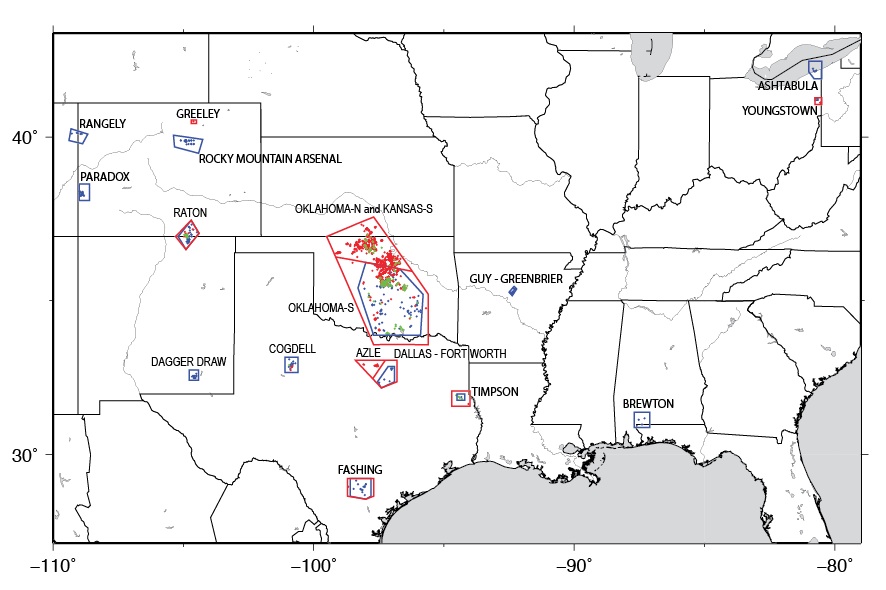On April 29, 2015, the U.S. Geological Survey (USGS) reported five earthquakes in Oklahoma of magnitude 2.5 or greater—that is, tremors strong enough to be felt. The most powerful of these was a M4.1 earthquake 21 km (13 mi) west of the city of Perry in north-central Oklahoma. Based on recent evidence reported by the USGS, these earthquakes were almost certainly induced by human activity as a consequence of the injection of wastewater from oil and gas production into deep disposal wells. See also: Earthquake; Oil and gas field exploitation; Well
Induced earthquakes, also known as induced seismicity or man-made earthquakes, may be triggered by a variety of means that change subsurface stresses or pore (fluid) pressures in rock formations. These changes can cause faults to slip or rocks to fracture and release energy (strain). In addition to water injection, the presence of artificial lakes, underground mining (rock bursts), oil extraction, and groundwater extraction are also known to have induced earthquakes at certain locations. Induced earthquakes are characteristically shallow in depth and M4 or lower in strength (not damaging). Nevertheless, more damaging induced earthquakes have occurred, such as the 2011 M5.6 earthquake in Prague, Oklahoma. See also: Fault and fault structures; Rock; Rock burst; Rock mechanics; Underground mining
Interest in the potential connection between the mining process called hydraulic fracture (or fracking) and induced earthquakes has intensified in recent years. In hydraulic fracture, oil companies force mixtures of water and various chemicals through shale formations to help increase the yield of oil and natural gas from them. According to the USGS, fracking can directly induce small earthquakes, but they are rarely strong enough to be felt. Fracking, however, can be indirectly responsible for more significant earthquakes because the wastewater produced in the fracking process is ultimately disposed of by injection into deep disposal wells. See also: Hydraulic fracturing (fracking); Natural gas; Oil shale; Shale
Since 2008, the number of M3+ earthquakes per year in the Central and Eastern United States has increased sharply from an average of 21 to an average of 99 in 2009–2013, and to a total of 659 in 2014 alone. According to the USGS, this increase in seismicity has been found to coincide with the increases in the injection of wastewater into deep disposal wells as part of the recent boom in natural gas production from shale formations.
Every six years, the USGS updates the National Seismic Hazard Model (NSHM) for forecasting the location, frequency, and strength of earthquakes. This computational tool is important for devising earthquake mitigation strategies, risk assessments, and engineering design codes for buildings and other infrastructure. Currently, induced seismicity is not included in the NSHM. But because of the recent spike in the number of earthquakes, the USGS and the Oklahoma Geological Survey in November 2014 held a workshop on induced seismicity to assess the risks. See also: Designing for and mitigating earthquakes; Earthquake engineering; Risk assessment and management; Seismic risk; Structural engineering
On April 20, 2015, the USGS released a preliminary report, Incorporating Induced Seismicity in the 2014 United States National Seismic Hazard Model—Results of 2014 Workshop and Sensitivity Studies, which identified 17 seismic zones in Central and Eastern United States attributed to induced seismicity. Perry, Oklahoma is located in one of the most active zones, which extends from northern Oklahoma to southern Kansas. The report does not reach any definite conclusion about how to model induced seismicity, but further clarification may be forthcoming, as the USGS expects to revise the report later in 2015. See also: Geologic mapping






